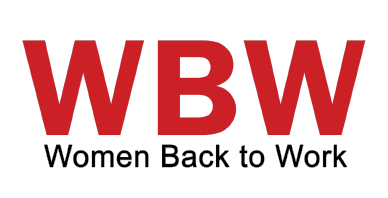A Guide to Flexible Work Arrangements for Returning Women
Returning to the workforce after a career break is a significant milestone for many women. However, the transition back into the professional realm often comes with the challenge of balancing work commitments with personal responsibilities.
In today’s rapidly changing job market, the demand for flexible work arrangements has surged, offering returning women the opportunity to pursue their career aspirations while maintaining a sense of equilibrium in their personal lives. This comprehensive guide aims to delve deeper into the various flexible work options available to returning women, providing insights into their advantages, disadvantages, and considerations to empower them in navigating the journey of work-life harmony.
Based on a recent study by Hubstaff, it was discovered that the second most prevalent reason individuals would consider rejecting a job is due to a poor work-life balance.
Remote or Hybrid Work Environments
Remote work has undergone a paradigm shift, transitioning from a niche offering to a mainstream employment model. For returning women, remote or hybrid work arrangements provide unparalleled flexibility, allowing them to work from the comfort of their homes or adopt a blend of remote and in-office work. The elimination of daily commutes not only saves time but also reduces stress levels, enabling women to allocate more time to their personal commitments. Moreover, remote work empowers individuals to manage their schedules autonomously, fostering a greater sense of control over work-life balance. However, challenges such as potential feelings of isolation and the need for self-discipline necessitate proactive strategies to ensure optimal productivity and well-being.
Hubstaff conducted a survey revealing that 91% of respondents opted for remote work to attain an improved work-life balance.
Part-Time Work Opportunities
Part-time positions offer returning women a gradual re-entry into the workforce, allowing them to balance professional commitments with personal priorities. With reduced hours compared to full-time roles, part-time work provides the flexibility to allocate time for caregiving responsibilities, pursue further education, or engage in personal pursuits. While part-time work offers greater flexibility, it may also entail limitations in terms of career advancement and benefits eligibility. Therefore, returning women should carefully evaluate the trade-offs and negotiate with employers to ensure alignment with their long-term career goals.
Flexible Working Arrangements
Flexible working arrangements encompass a spectrum of options tailored to accommodate diverse needs and preferences. Job sharing, for instance, allows two or more employees to share the responsibilities of a full-time role, facilitating a collaborative approach to workload management. Compressed workweeks condense the standard 40-hour workweek into fewer days, providing extended periods for rest and rejuvenation. Flexible hours enable individuals to customize their schedules, accommodating unique start and end times to better align with personal commitments. By embracing flexible working arrangements, returning women can optimize their work-life balance while maximizing productivity and satisfaction in their professional endeavours.
Advantages and Disadvantages
Flexible work arrangements offer numerous advantages, including enhanced work-life balance, increased job satisfaction, and improved overall well-being. By empowering individuals to manage their time and priorities effectively, flexible arrangements contribute to greater retention and productivity in the workforce. However, challenges such as blurred boundaries between work and personal life, potential feelings of isolation, and the need for self-discipline warrant careful consideration and proactive strategies to overcome. Moreover, returning women should be mindful of the potential impact on long-term career progression and negotiate with employers to ensure sustainable growth and development.
Embracing Long-Term Solutions
As returning women navigate the landscape of flexible work arrangements, it’s essential to consider the long-term implications and alignment with career aspirations. While certain arrangements may provide immediate relief, it’s crucial to assess their sustainability and impact on long-term professional growth. Open communication with employers regarding desired work arrangements fosters a supportive work culture conducive to achieving work-life balance and long-term success.
In conclusion, flexible work arrangements offer returning women a pathway to achieve work-life harmony and pursue their career aspirations with confidence and purpose. From remote work to part-time positions and flexible scheduling options, the evolution of flexible work continues to provide opportunities for women to thrive professionally while honouring personal commitments. By embracing flexibility and leveraging available resources, returning women can embark on a journey of empowerment, fulfilment, and sustainable success in both their professional and personal lives.
Ready to take the next step towards achieving work-life harmony? Explore our flexible work solutions tailored for returning women at Women Back to Work. Whether it’s remote, part-time opportunities, or flexible working arrangements, we’re here to empower you on your journey. Join us in embracing flexibility and unlocking the path to professional fulfilment and personal balance. Start your journey with Women Back to Work today.
